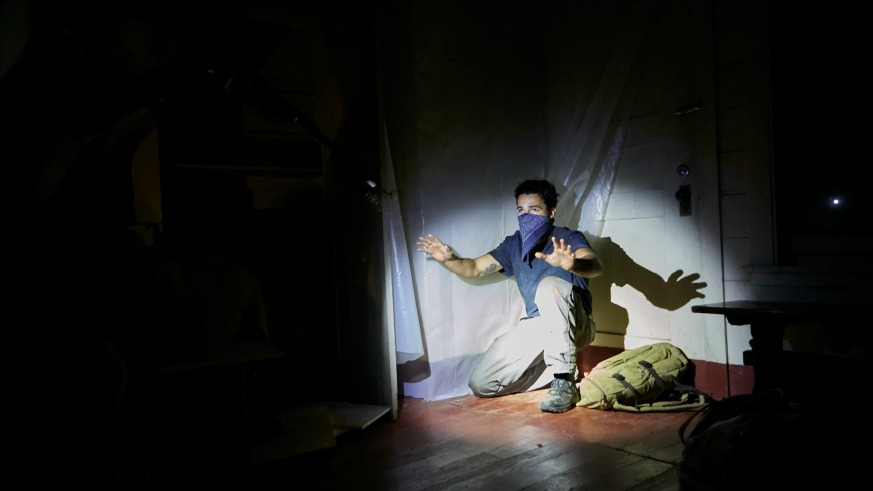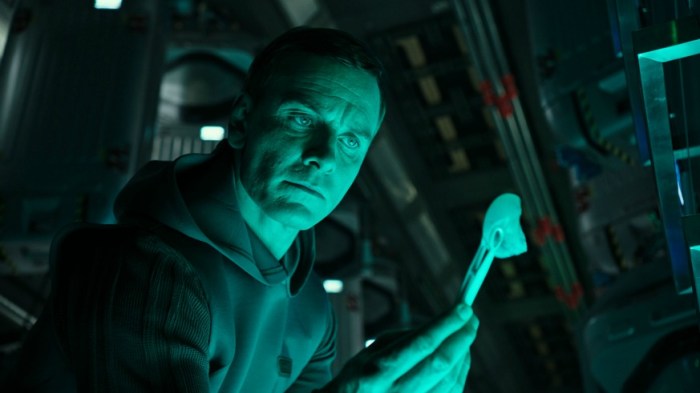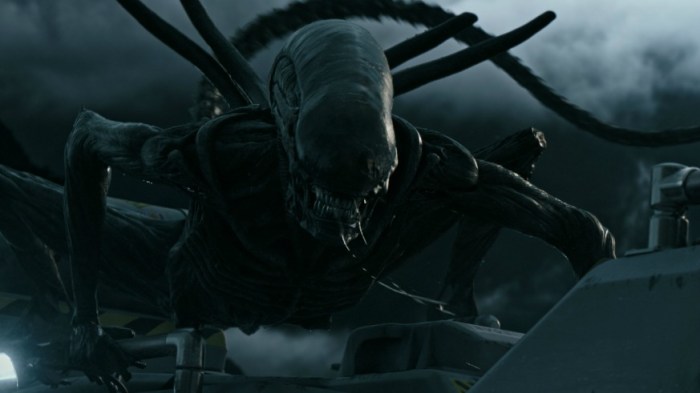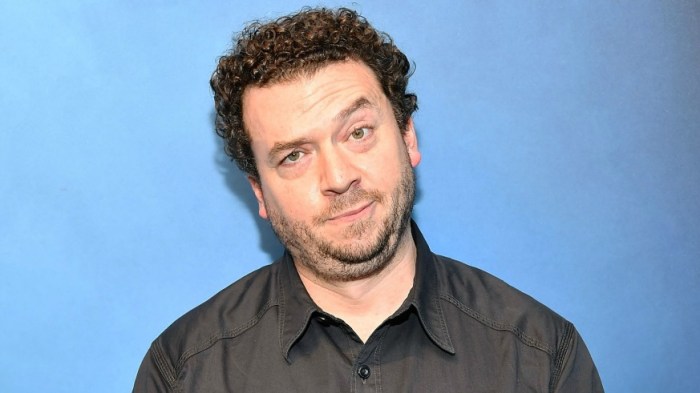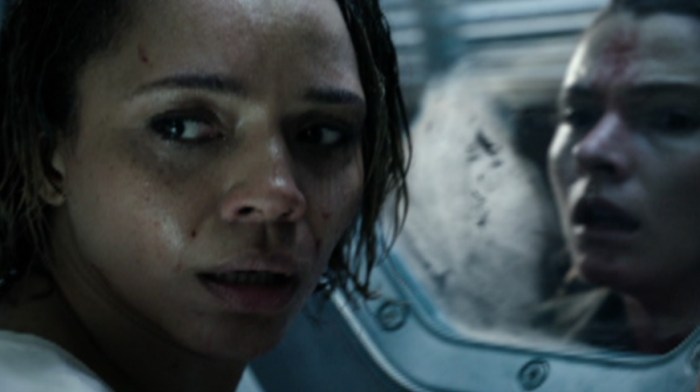Here’s a bold statement: most horror movies aren’t scary. That doesn’t mean they’re not good. We only mean that, technically speaking, they’re not the dictionary definition of “scary.” Classic monster movies, slasher movies, Freddy Kruger movies — they may provide a couple good jumps, some “boo!” moments, some iconic creatures. They’re, many of them, great movies. But they offer momentary thrills. They don’t get at something deeper, don’t get at what’s really and truly scary, don’t hit us on a gut level. But some do. The excellent new sorta-horror film “It Comes at Night” is one (and here’s why). Here’s 14 others we find scary — and they’re not all of them horror:
‘Halloween’ (1978)
The movie that invented the slasher genre doesn’t have that many kills. In fact, we find it so much freakier before the grown-up Michael Myers starts picking off horndog teens with a butcher knife. It’s all about the first 45 minutes, which is nothing but Myers stalking his prey one-by-one — following them around, spying on what they’re doing, hanging back but for who knows how long? Every time he doesn’t go in for the kill, we grow sicker and sicker with anticipation, while feeling more and more like a disturbed voyeur watching animals about to get slaughtered.
‘Alien’ (1979)
The first “Alien” is a slasher pic, too, and another one that greatly delays the murdering. The deaths are scary, too — the part where [spoiler] is gobbled up in the air ducts is one of the few totally successfully, non-cheap “boo!” scares in cinema. But what really gets under our skin is the idea underneath it: That humans are insignificant, that they can handily be wiped out by an alien species whose only motivation is murder. Then again, these days, it looks like it will be us, not some space monster, who will kill us all.
‘The Shining’ (1980)
What freaks us out about Stanley Kubrick’s deliciously unfaithful take on Stephen King isn’t the concept of a father (Jack Nicholson) going mad and trying to kill his family. It’s that the movie itself is totally insane. Kubrick uses the full resources of his powers to make you feel like you’re losing your mind, and any attempt to make sense of what occurs only raises more questions. Like David Lynch, Kubrick made a film that hits on the idea that not knowing being able to know everything is terrifying.
‘The Exorcist’ (1973)
We aren’t Catholic, or even religious, but if we were, we’d totally think this was the scariest movie ever made. Imagine if all the fire and brimstone priests talked about was real. What if Satan existed and could possess eenage girl (Linda Blair)? What if priests really would have to have a holy water-and-prayers showdown with the Dark Lord himself? We don’t believe in any of this stuff, and yet William Friedkin’s classic still freaks us the hell out.
‘The Texas Chain Saw Massacre’ (1974)
Again, it’s not the bloody kills that get to us. In fact, it’s the second half of Tobe Hooper’s gutter grinder, which feature no murders, that fray on our nerves. Once the lone survivor (Marilyn Burns) is captured and trapped inside the house with the psychotic family — including decrepit, crotchety grandpa, who can’t even pick up a hammer to cave in her skull without dropping it — it’s 45 full minutes of pure shrill, with over-acting actors, endless close-ups of Burns’ wide-open eyeball and a final chainsaw-dance that’s like a cigarette after sex. To watch it is to feel like you’ve been through an ordeal, too.
‘Cat People’ (1942)
Val Lewton was short on cash. In the 1940s, the producer was working for RKO Studios — one of the bigger Hollywood houses, but not one of the richest. They wanted to create their own version of Universal’s monster movies, like “Dracula” and “Frankenstein.” But they didn’t want to pay for them. Enter Lewton, a P.T. Barnum-style showman, who hatched up a cunning scheme: He’d come up with shocking, attention-getting titles — “The Leopard Man”! “Ghost Ship!” “I Walked with a Zombie!” — first, then had his team of talented, resourceful filmmakers work cleverly around the tiny budgets. And so his first RKO horror, “Cat Woman,” was about a woman (Simone Simon) who thinks she’ll turn into a panther when sexually aroused. But you’d never see the transformation.
Lewton’s horrors use their cheapness to their own betterment. For one thing, the sets were cheap and ugly, so the filmmakers underlit them, creating powerful, eerie atmosphere on a couple dimes. But there’s something more afoot in Lewton’s films: Because they couldn’t show horrors in detail, his films became about the unknown. “Cat Woman” has some dynamite thriller scenes, but what’s unnerving about it is the idea of powers beyond characters’ control. It’s not just that Simon’s character can turn into a killer animal; it’s that society has so trained her to fear her sexuality that, when turned on, what emerges from her is far worse than sexists ever could have imagined.
‘Repulsion’ (1965)
Roman Polanski’s “Rosemary’s Baby” could be on this list; try watching it having no knowledge of its twist ending and let’s see if you leave the theater feeling good about life. But his second feature, and his first in English, is even harder on the nerves. Catherine Deneuve plays a beyond repressed nail salon worker who comes undone in her apartment while her sister is away on a dirty weekend. And because she looks like Catherine Deneuve, terrible men won’t leave her alone. It’s more than a movie that crams you inside a deranged mind; it’s also a terrifying portrait of a woman living with trauma.
‘Suspiria’ (1977)
Nevermind the silly business about a coven of witches who lord over a German ballet school. What’s terrifying in Dario Argento’s masterpiece is the way he tells the nonsense. Or barely tells it: The story is barely coherent, but it has one nerve-jangling, endless sequence after another, each abetted by Goblins’ maddeningly catchy, ear-shattering score. None of them ever quite tops the Grand Guignol opening 15 minutes — one of the loudest and most aggressive stretches of cinema ever. But it often comes close. And it does it with buckets and buckets of style (and blood). We’re all for Luca Guadagnino’s forthcoming remake, starring Dakota Johnson and Tilda Swinton; if anyone’s going to match Argento for verve and nerve, it’s the guy who made “Love” and “A Bigger Splash.”
‘Pulse’ (2001)
It doesn’t sound terrifying: Kiyoshi Kurosawa’s Japanese chiller concerns ghosts who haunt the Internet. It even made for a predictably terrible American remake, starring Kristen Bell, which was deservedly mocked in “Forgetting Sarah Marshall.” But the original is truly frightening, both in its eerily prophetic look at the information superhighway sucking humans literally dry, and in an army of unforgettable moments, the most harrowing being a scene where a ghost slowwwwwwwwwwly enters the frame, about to devour its prey. It’s the kind of horror film that creates new nightmares.
‘Audition’ (1999)
Imagine an Eric Rohmer film that turns into an Eli Roth gorefest. It’s not such a bad match-up — at least when Japanese extreme horror director Takashi Miike does it. In his freakiest film — even moreso than “Ichi the Killer,” which features lots of unprintable business with blades — a sadsack middle-aged widower overcomes his grief by tricking a nice, quiet, docile woman into loving him. It all seems sweet, if a little skeevy. We don’t want to talk about what happens in the last half-hour; we’re still talking about it with our therapists.
‘The Fly’ (1986)
There are vomit-y special effects aplenty in David Cronenberg’s radical reimagining of the Vincent Price classic, in which a man turns into a fly — except in Cronenberg’s version, the transformation isn’t instantaneous but slow and emotionally devastating. In fact, the movie, released at the height of the AIDS crisis, plays a lot like watching someone you love gradually succumb to a terrible disease. That it happens to Jeff Goldblum at his most Goldblumiest makes it all the harder to watch.
‘The Blair Witch Project’ (1999)
Almost two decades of humbug found footage knockoffs have done little to tarnish the blockbuster that made them huge. But for all its stomach-churning shaky-cam — a quick moment of bottomless sympathy to those who saw this in the front row of theaters back in the day — it’s the portrait of increasing fear and madness that hurts the most. Our foolish trio really do seem like people way in over their heads. And that we never got an answer to what got them makes it all the scarier — except that a terrible sequel made the subsequent year and a bad reboot-sequel from last summer cruelly tried to ruin its mysteries. And neither of them has a scene as harrowing as Heather Donohue’s snotty confessional (see above).
‘The War Game’ (1965)
This isn’t a horror film, except that it kind of is: It’s a fake documentary by the peerlessly political filmmaker Peter Watkin, which imagines what would happen if England was subject to a nuclear attack. First, there’s the carnage, rendered in realistic detail. Just as scary, though, is how poorly the government of the time would handle devastation so total — how unprepared they are, how many services would be tied up in bureaucratic red tape, how little hope there is for the survivors. Maybe now’s not the time to watch this.
‘The Mouth Agape’ (1974)
This really isn’t a horror film, but we’re more afraid to rewatch it than anything else on this list. It’s a French drama, by the ever-intense Maurice Pialat, about a terminally ill woman (Monique Melinand) who’s dying. And that’s all she does. Over 82 grueling minutes, she lies on a bed, wheezing, coughing, her identity gradually disappearing as her dying body takes over, all while her grown children watch in helpless despair. It’s a terrible way to go, in agony, over a long period of time, and it forces you to realize that sometimes surviving is as terrifying as death itself. We watch it with our hands over our eyes, the way some people watch “Friday the 13th” entries. But this movie is way, way, way scarier than a Jason movie.
Follow Matt Prigge on Twitter @mattprigge

